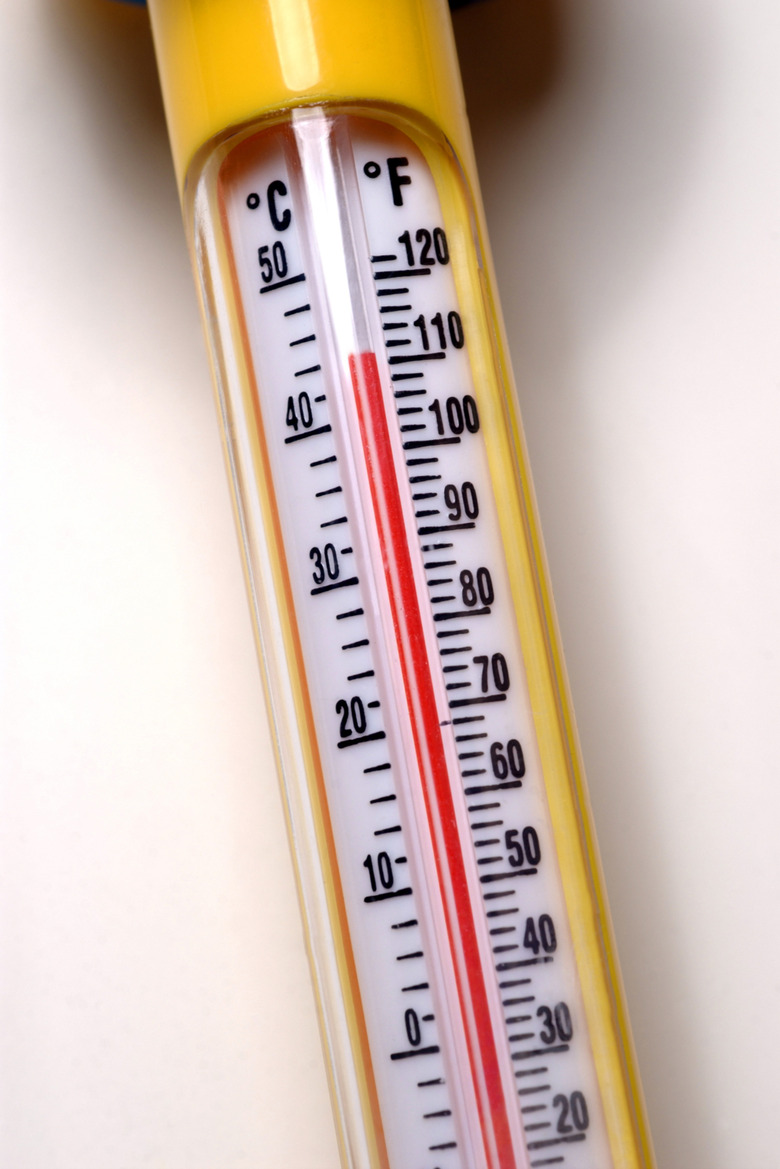Basic Weather Instruments
To predict the weather, meteorologists use a combination of experimental measurements and simulations on sophisticated supercomputers. Variables that need to be measured include temperature, pressure, wind speed and rainfall. The instruments used to measure these variables do not need to be sophisticated, and a basic weather station can be placed within a home garden.
Thermometer
Thermometer
A thermometer measures temperature. Several different types of thermometers exist, the most common of which is the glass mercury instrument. This consists of a glass bulb in which liquid mercury is placed. As temperature increases, thermal expansion leads to an increase in the mercury volume, leading the level to rise. A scale on the bulb allows the temperature to be read. The units of temperature are degrees Celsius or degrees Fahrenheit.
Barometer
Barometer
Meteorologists measure atmospheric pressure with a barometer. The most common type of barometer is very similar to the mercury thermometer. It consists of a tube of mercury with one sealed end and one open end. The barometer works by balancing the weight of the mercury against the air pressure. If the weight of the mercury is greater than the air pressure, the mercury level falls. Conversely, if the air pressure is greater than the weight of the mercury, its level rises. There are several units of pressure, but the most commonly used metric units are the pascal and bar.
Anemometer
Anemometer
An anemometer measures atmospheric wind speed. It consists of a plastic tube with a free-moving plate, held upon a platform. A hole in the bottom of the tube allows wind to exert a force upon the plate, leading to its movement within the tube. A scale written on the tube allows the wind speed to be read. Wind speed is normally measured in kilometers per hour or miles per hour.
Ombrometer
Ombrometer
An ombrometer allows you to measure rainfall. These devices are very basic and normally consist of a plastic container with a millimeter scale on it. Water collected within the tube can be read off the scale. More sophisticated ombrometers have a container with an accompanying digital scale and allow rainfall to be plotted upon a computer.
References
Cite This Article
MLA
Markings, Samuel. "Basic Weather Instruments" sciencing.com, https://www.sciencing.com/basic-weather-instruments-5208/. 24 April 2017.
APA
Markings, Samuel. (2017, April 24). Basic Weather Instruments. sciencing.com. Retrieved from https://www.sciencing.com/basic-weather-instruments-5208/
Chicago
Markings, Samuel. Basic Weather Instruments last modified March 24, 2022. https://www.sciencing.com/basic-weather-instruments-5208/
